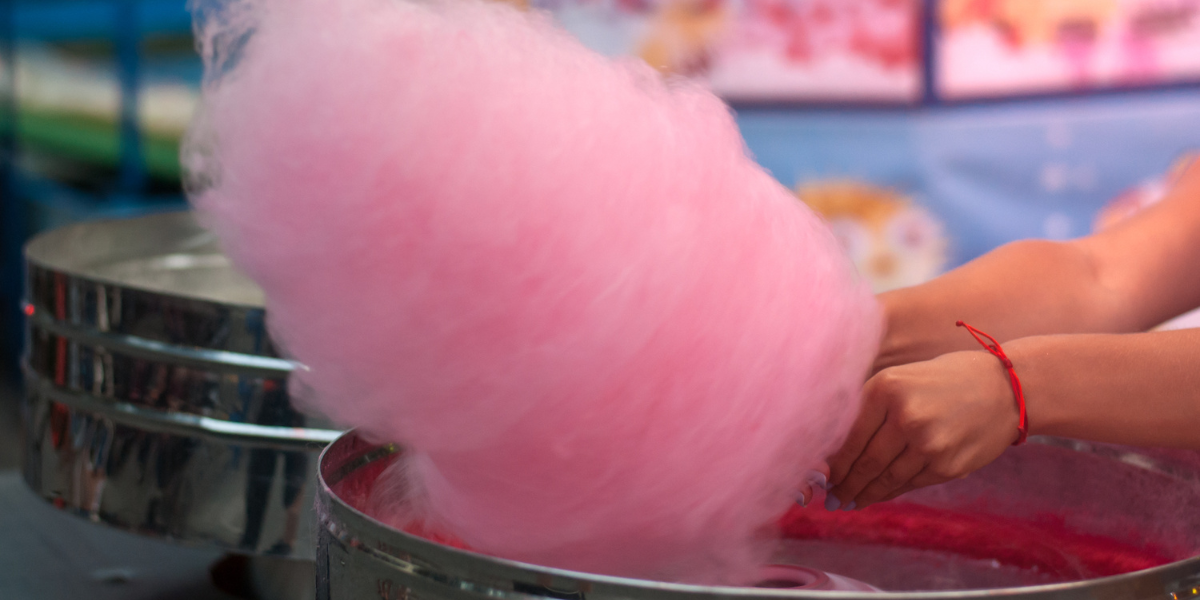On 17 February, Tamil Nadu and Puducherry banned cotton candy after Rhodamine-B, a textile dye and chemical compound, was found present in it.

Representative image of cotton candy. (Creative Commons)
In a food safety operation at the Medaram Jatara site in Mulugu district, officials from the Telangana State Food Laboratory stumbled upon a disconcerting revelation. A batch of cotton candy, locally known as “peechu mithai” in Telugu, was found to be tainted with Rhodamine-B, a banned substance and a potent carcinogen.
“Cotton candy is a familiar sight in rural areas, but it’s not a regular feature in Telangana and Andhra Pradesh. However, the tribal festival — Medaram Jatara — in the state’s Mulugu district is in full swing, attracting lakhs of visitors, including people from states like Maharashtra, Chhattisgarh, and Odisha. Naturally, cotton candy vendors have also flocked to the festival,” G Laxmi Narayana Reddy, Chief Analyst of Telangana State Food Laboratory, tells South First.
To recall, on 17 February, Tamil Nadu and Puducherry banned cotton candy.
Following their lead, Telangana proactively began testing samples from the Jatara, leading to the detection of Rhodamine-B, a carcinogenic substance used as a food colourant.
“In the Telugu state, cotton candy is not common, that’s why the state has not banned cotton candy,” Reddy explains.
Rhodamine B (RhB) is a water-soluble chemical predominantly employed as a colourant in industries like textiles, paper, leather, and paint. In its dissolved state, RhB appears pink, yet in its powdered form, it retains a green hue.
Despite its extensive use in various sectors, Rhodamine-B is deemed toxic and carcinogenic when consumed in food products. Research suggests that regular ingestion of RhB-laden food can inflict damage on cerebellum tissue and the brainstem, potentially causing functional abnormalities and impeding motor functions.
Moreover, significant intake of Rhodamine-B may result in liver dysfunction or cancer. The Food Safety and Standards Act (2006) prohibits its use in the food industry due to these potential risks.
The prohibition stems from the use of perilous additives like Rhodamine-B in cotton candy. This seemingly innocent treat, adored by both children and adults, is tainted with synthetic dye, notorious for its vibrant pink hue.
“Rhodamine-B is not just another food colouring; it’s a chemical primarily used in industrial applications, including as a tracer dye in water and a colourant in textiles and plastics. The allure of its bright colour has, unfortunately, made its way into the food industry, particularly in sweets like cotton candy, despite its non-approval for food use by food safety authorities,” Neurosurgeon and Head Researcher at Nonpareil Centre for Neuro and Psychosomatic Development, Dr Akhil Raj explained to South First when Tamil Nadu and Puducherry had banned cotton candy.
According to the Government Food Analysis Laboratory in Guindy, samples of coloured cotton candy contained Rhodamine-B, a textile dye and chemical compound, classifying them as “substandard and unsafe” under the Food Safety and Standards Act, 2006.
Tamil Nadu Health Minister Ma Subramanian emphasised, in a press statement, that under the Act, it is illegal to prepare, package, import, sell, or serve food containing Rhodamine-B at weddings and public events, with penalties for non-compliance.
The decisions by Tamil Nadu and Puducherry come in the wake of alarming reports highlighting potential health risks linked to Rhodamine-B. Studies indicate that prolonged ingestion of this dye can be carcinogenic, leading to severe health issues, including organ damage.
Experts argue that the nonchalant use of such a hazardous substance in food, particularly in food widely consumed by children, is a ticking time bomb for public health. The bans in these regions set a precedent for a nationwide call to action.

Jul 26, 2024

Jul 26, 2024

Jul 26, 2024

Jul 26, 2024

Jul 26, 2024

Jul 26, 2024